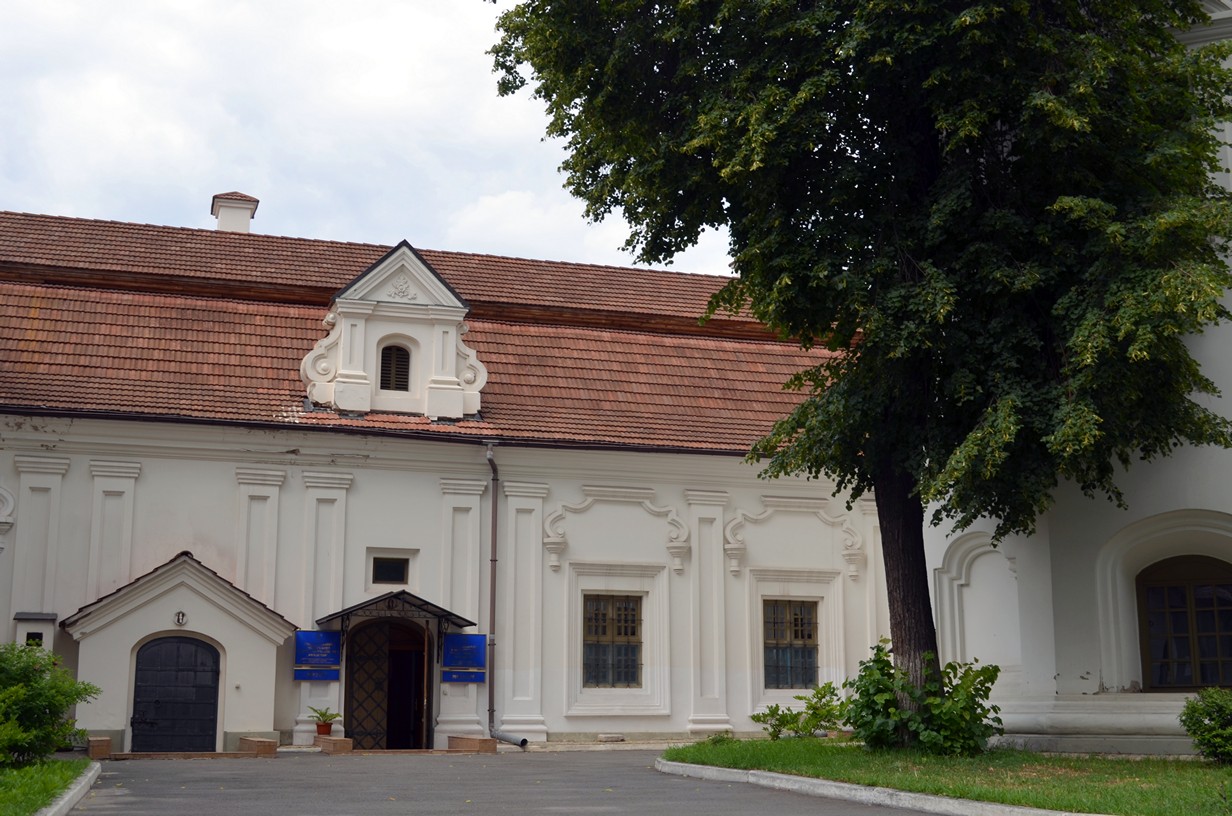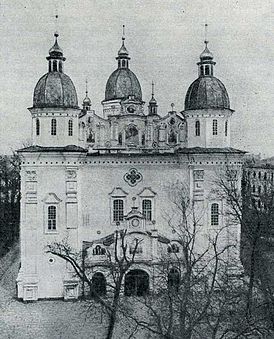(archive)
Church of the Holy Spirit
The Refectory with the Church of the Holy Spirit belongs to the first stone buildings of the Kyiv Brotherhood Epiphany Monastery and the Kyiv-Mohyla Academy, which has been repeatedly rebuilt and changed its architectural image. It is built in the early 1730s by the founder and patron of the academy and monastery, Metropolitan Petro Mohyla as the education space for students of the Kyiv Brotherhood Collegium, which was erected on the site of the Kyiv Brotherhood School. It also housed the Church of the Holy Princes Borys and Hlib, or Borysohlibska. In addition, the building was originally used as a refectory of the monastery and the collegium, giving the second name of Refectory. After the fire of Podil in 1811, the Refectory was reconstructed in a classic style with one-storeyed annexes by the architect Andriy Melenskyi. At that same time, the altar was transferred from the Church of the Holy Spirit, which was destroyed in Podil. In the 1860s, the church was rebuilt, a new altar was created and the walls were decorated.
During the 17th-19th centuries. the building, in addition to its inherent temple functions, was used for general academic and solemn gatherings and training. For a long time it hosted the library of the Academy.
During the Soviet era, the building was donated to the agricultural artel. In the 1950s, the building that suffered extensive damage during the war was rebuilt and transferred to a city hospital. In 2004-2005 the NaUKMA asserted its right to further use the abandoned structure. In 2005-2008 the NaUKMA restored the building. On the ground floor in 2008, the Holy Spirit Church was consecrated. The first floor is used as an exhibition hall of the NaUKMA Museum, as well as for holding scientific conferences, seminars, concerts of classical music, presentations of publications, social and cultural events.
Read moreHouse of Galshka Gulevychivna

Halshka Hulevychivna House is the oldest brick building of the complex of buildings of Kyiv Brotherhood Epiphany Monastery of the end of the 16th — early 17th century. According to the memorial documents, it is better known as the cooking room with cells, which, along with other seven historical buildings of the monastery, is a monument of history and architecture of national importance. There are several versions of the original functional purpose of the building.
According to one of them, it was a dwelling house which H. Hulevichivna donated to Kyiv Brotherhood in 1615 for the Kyiv Brotherhood School. And later it transformed into a monastery cooking room, that is, a kitchen.
According to the second version, this is a former refectory built during Petro Mohyla time and described by Paul Aleppsky in the famous Podorozh Patriarkha Makariia [The Travel of Patriarch Macarius].
According to the third version, the building was administered for the cooking room from the very beginning.
Kyiv-Mohyla community supported the version by which the building was a family home of Halshka Hulevychivna who gifted it with the whole estate to Kyiv Brotherhood.
Since the grant of Halshka Hulevychivna notes that she immediately passes the estate to the disposal of Kyiv Brotherhood, and “introduces the school,” it is likely that Kyiv Brotherhood School was located right in Halshka Hulevychivna’s House.
In the early 1960s, Petro Mohyla built a new building near the House of Halshka Hulevychivna for the successor of Kyiv Brotherhood School — Kyiv Collegium. The new building was used as a teaching room and refectory with the Church of St. Borys and Hlib. Since then, for a long period before the liquidation of the monastery and the Academy by the Soviet authorities, the House of Halshka Hulevychivna was used as a kitchen room at the refectory of the monastery and educational institution.
Although the building was many times rebuilt and adapted to various needs, it has retained its structure: one-story, rectangular according to the plan (originally with two lateral wings that later were lost), with a central entrance in the middle of the southern facade, the entrance hall and two rooms built in mirror-reflected position, as well as with a rare passage in the northern wall, and vaults of the first floor and basements.
In 2006-2008 NaUKMA restored the building along with the refectory, after which NaUKMA Museum opened. Today the House of Halshka Hulevychivna hosts the exposition of the 400-year history of Kyiv-Mohyla Academy, other exhibitions, academic conferences, round tables, and presentations.
Read more